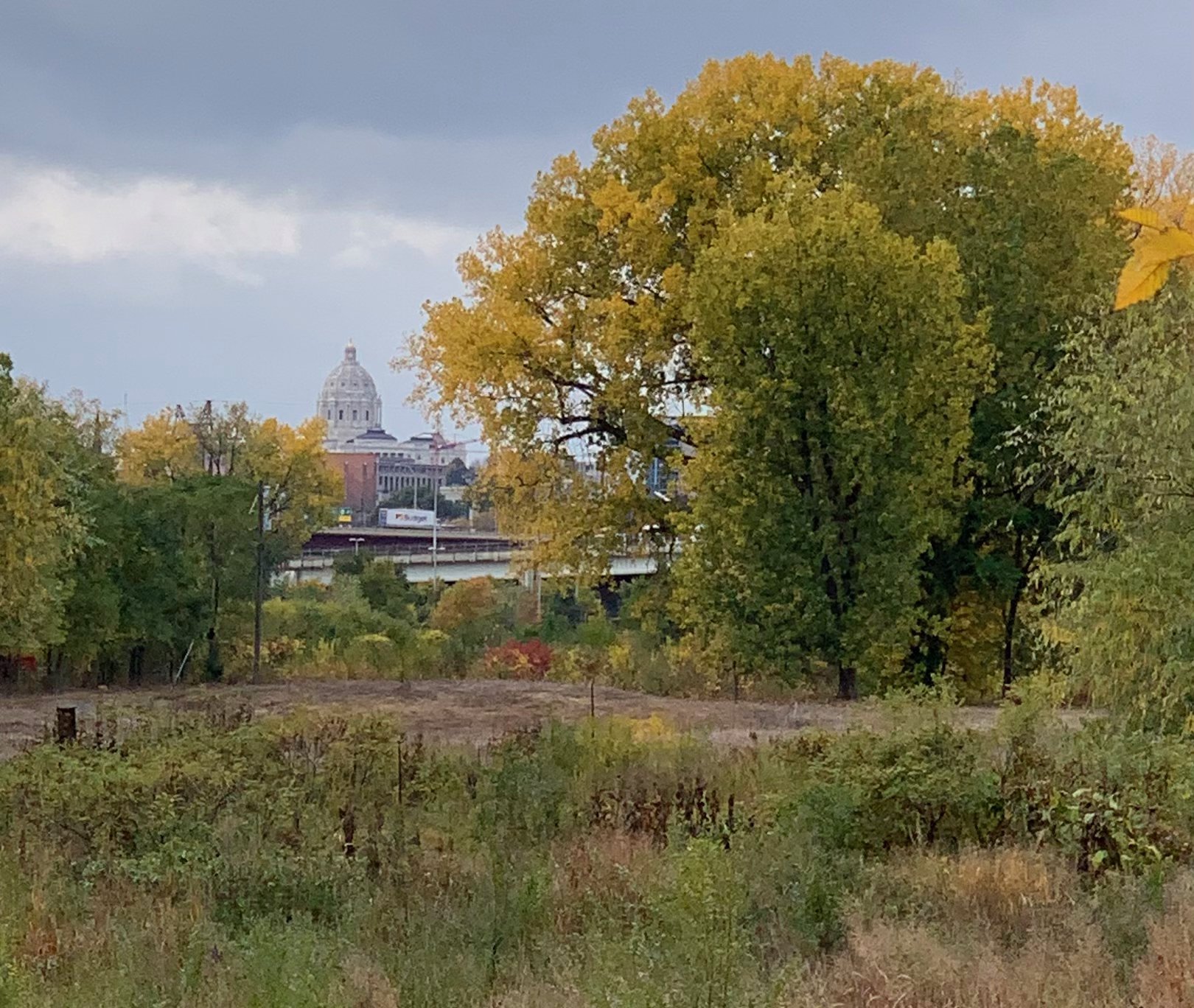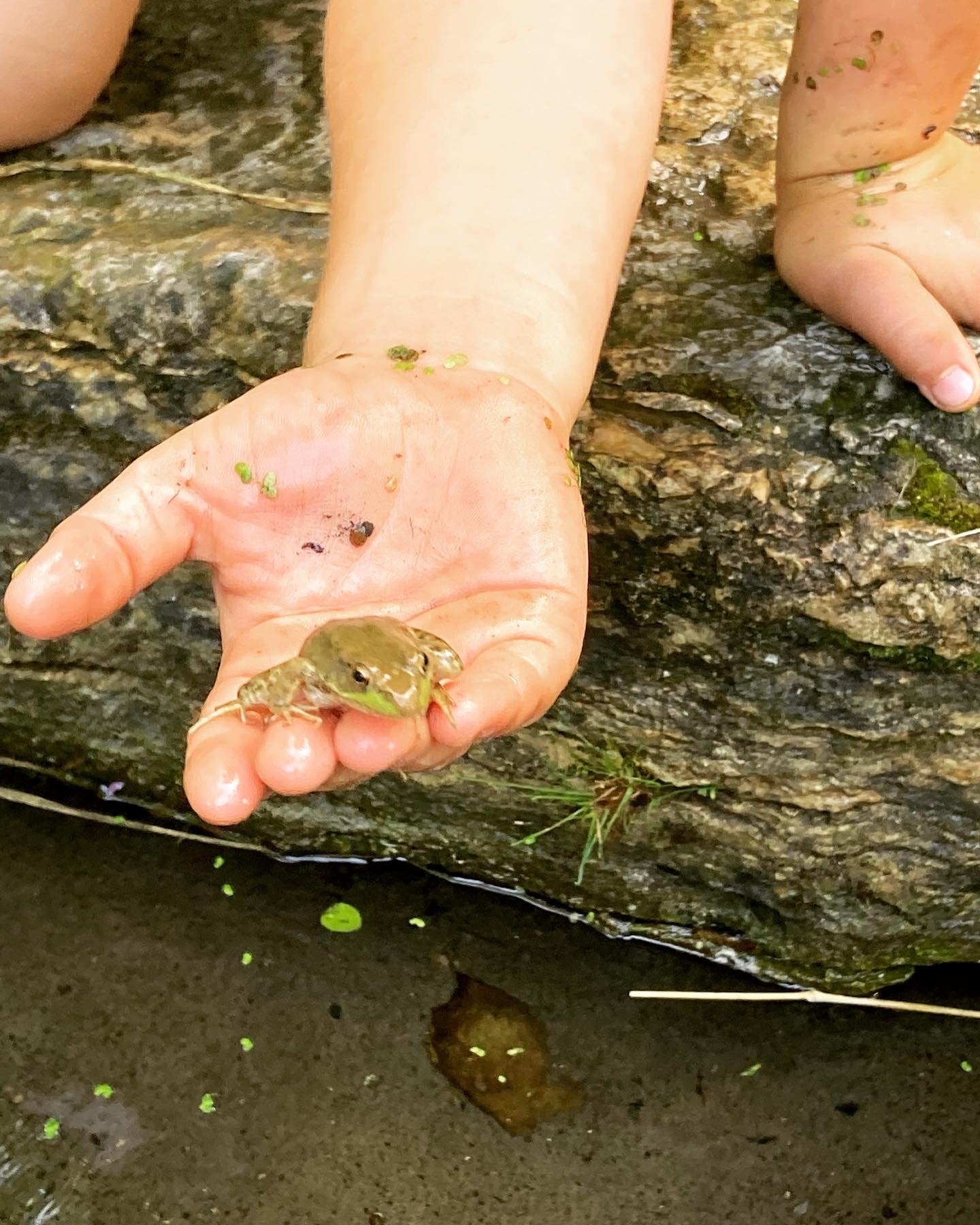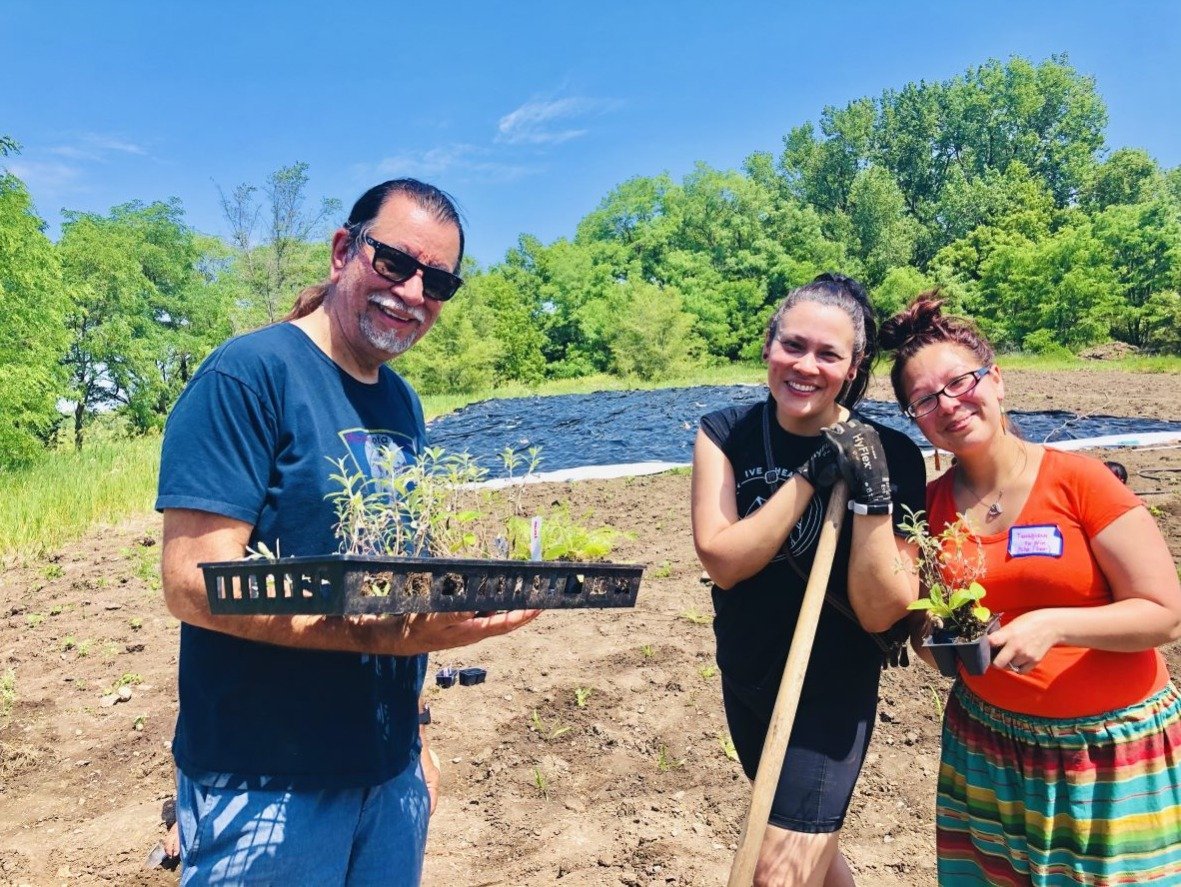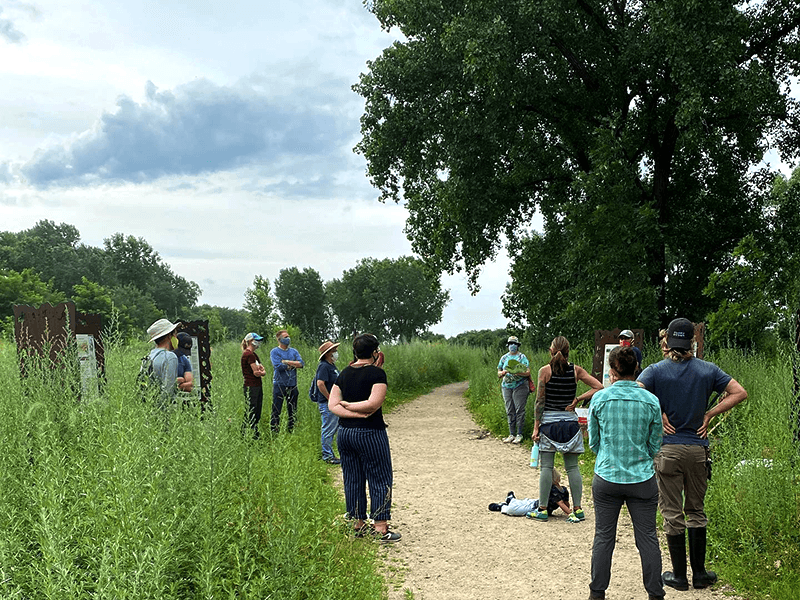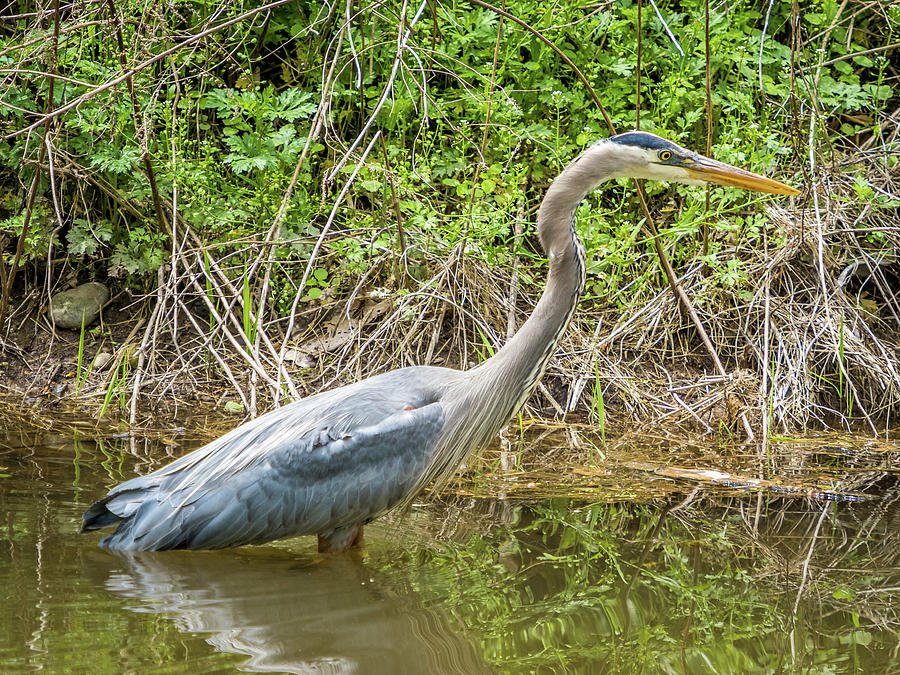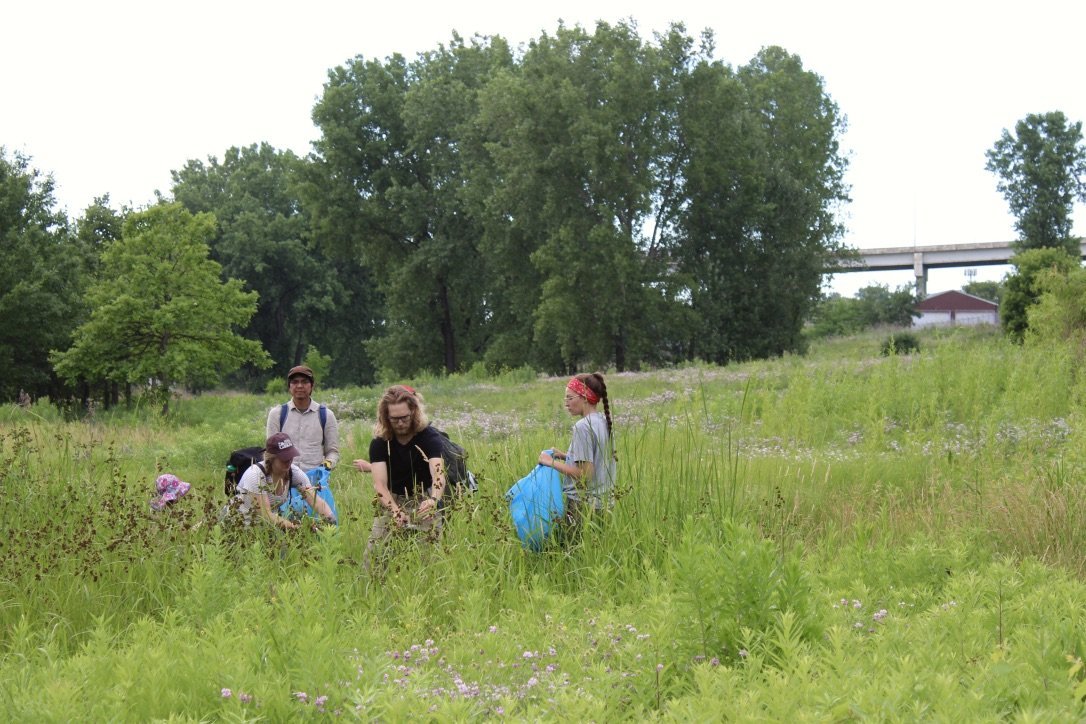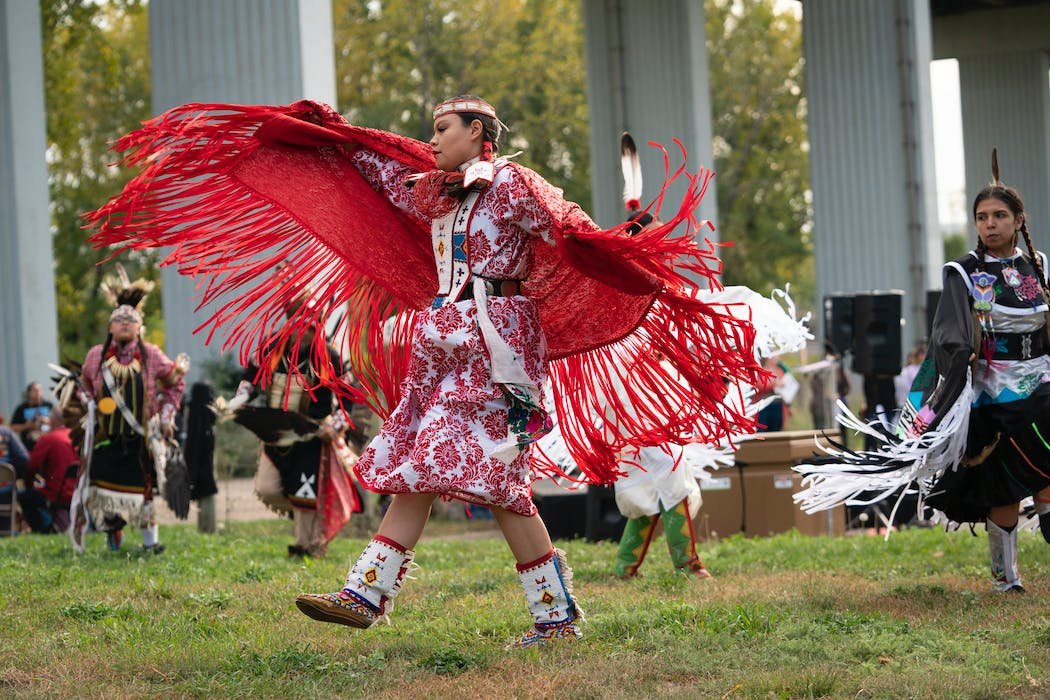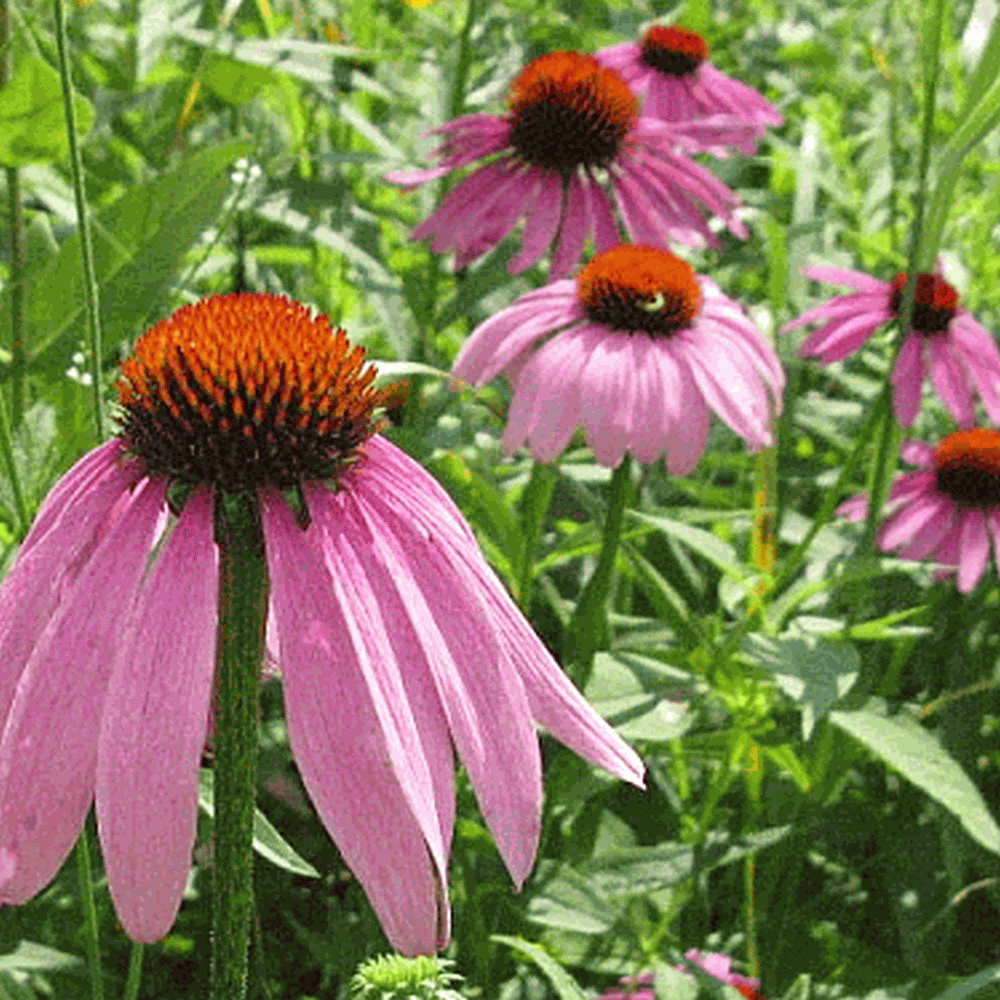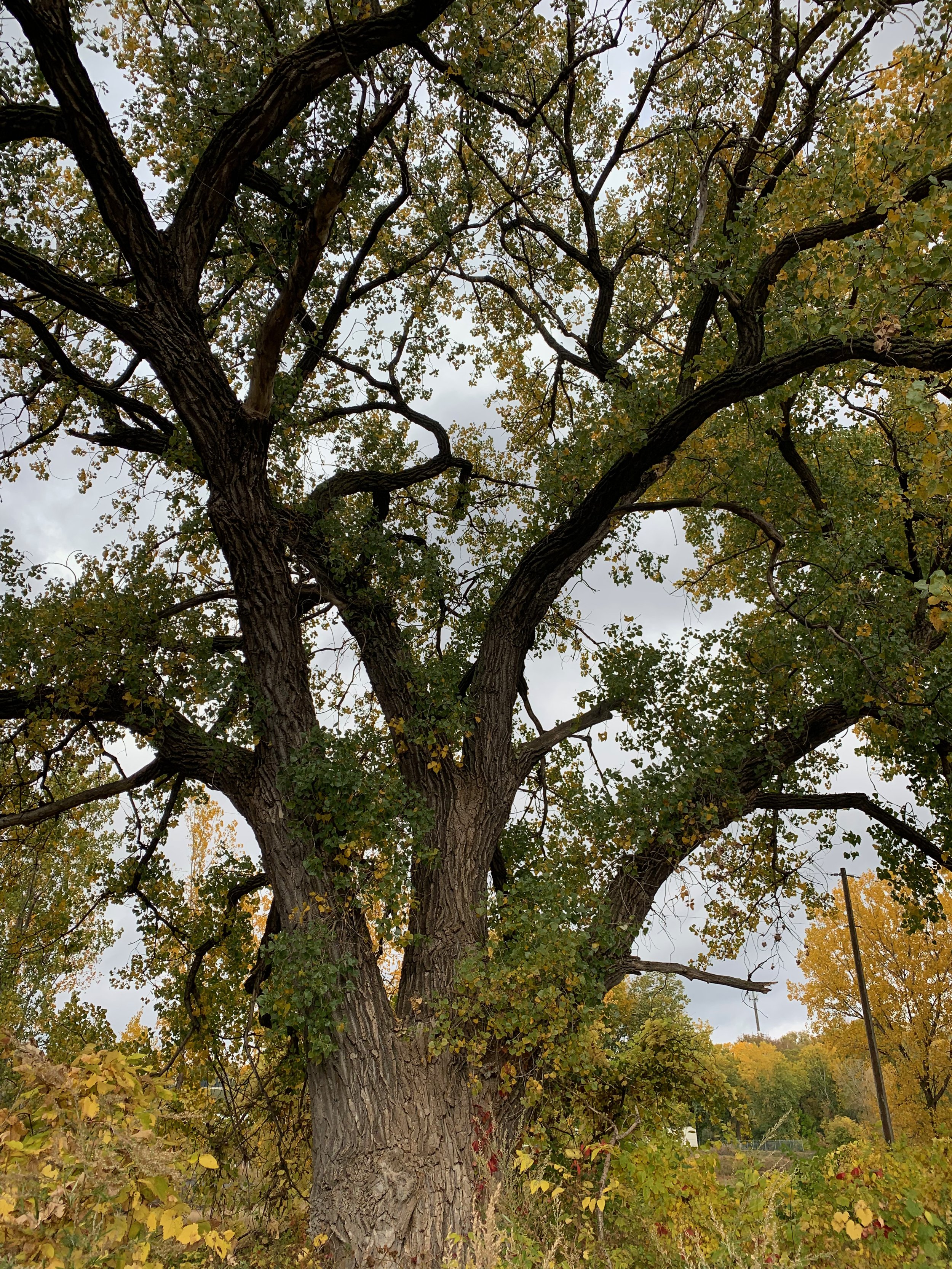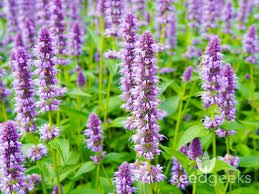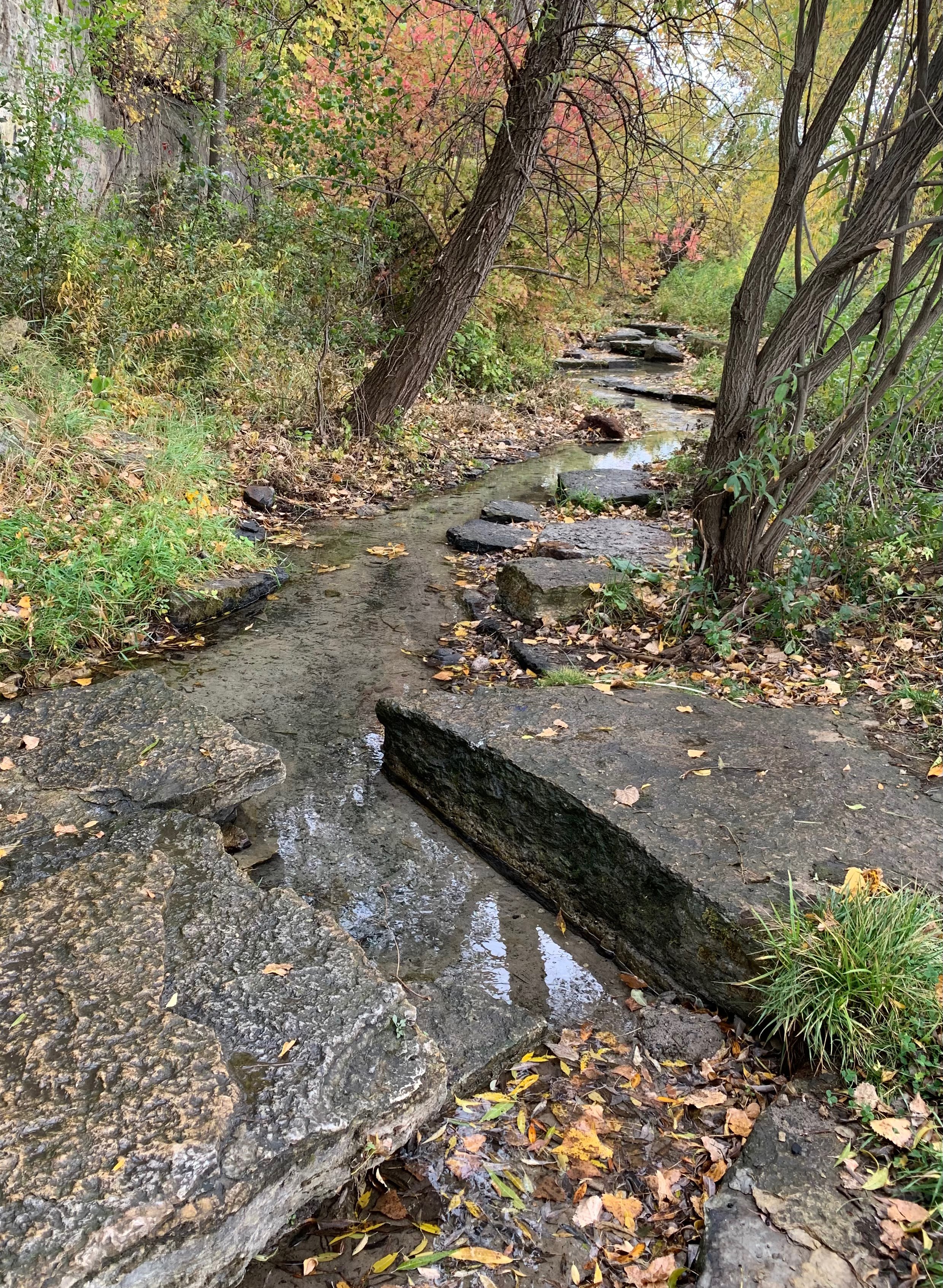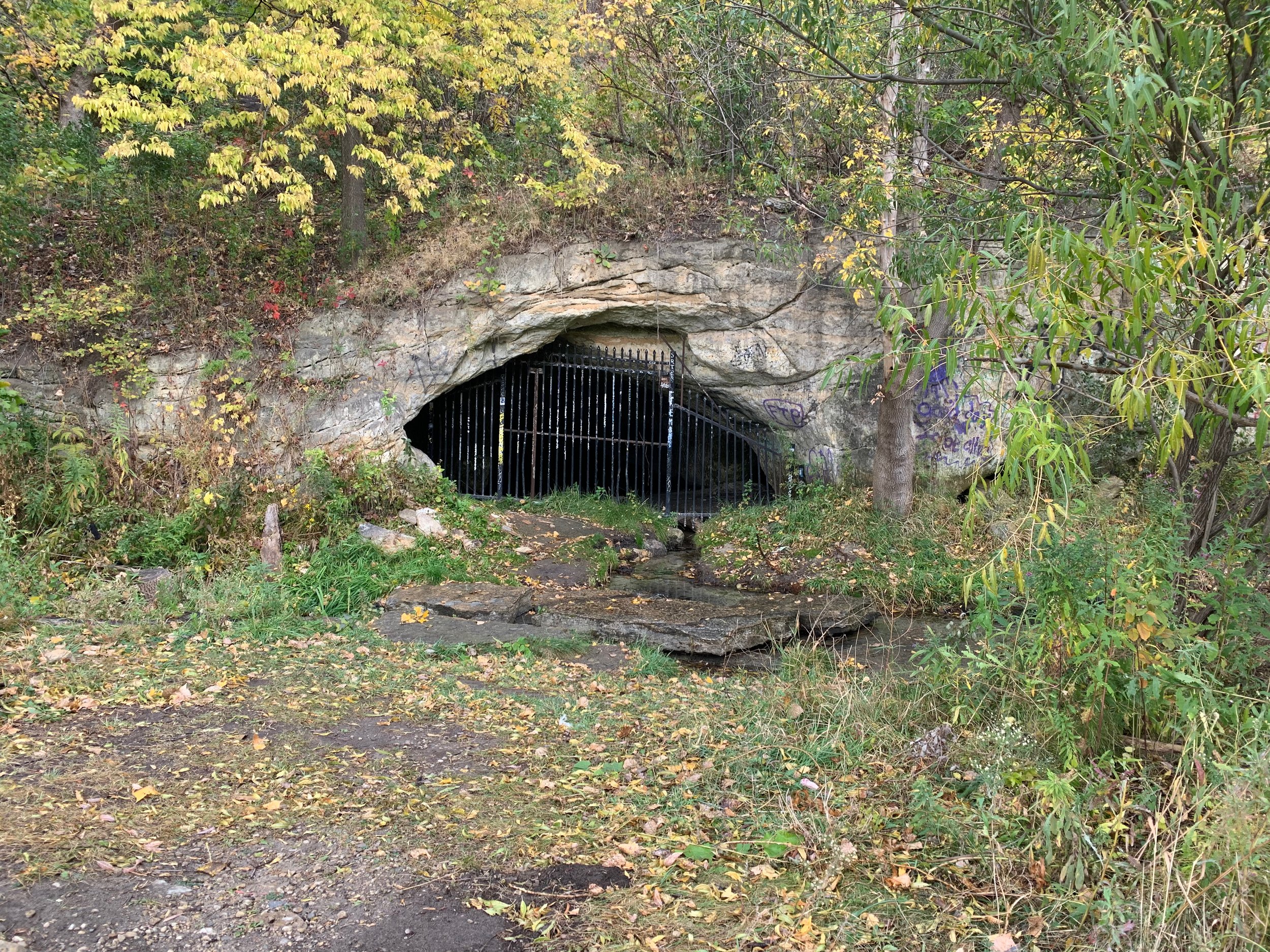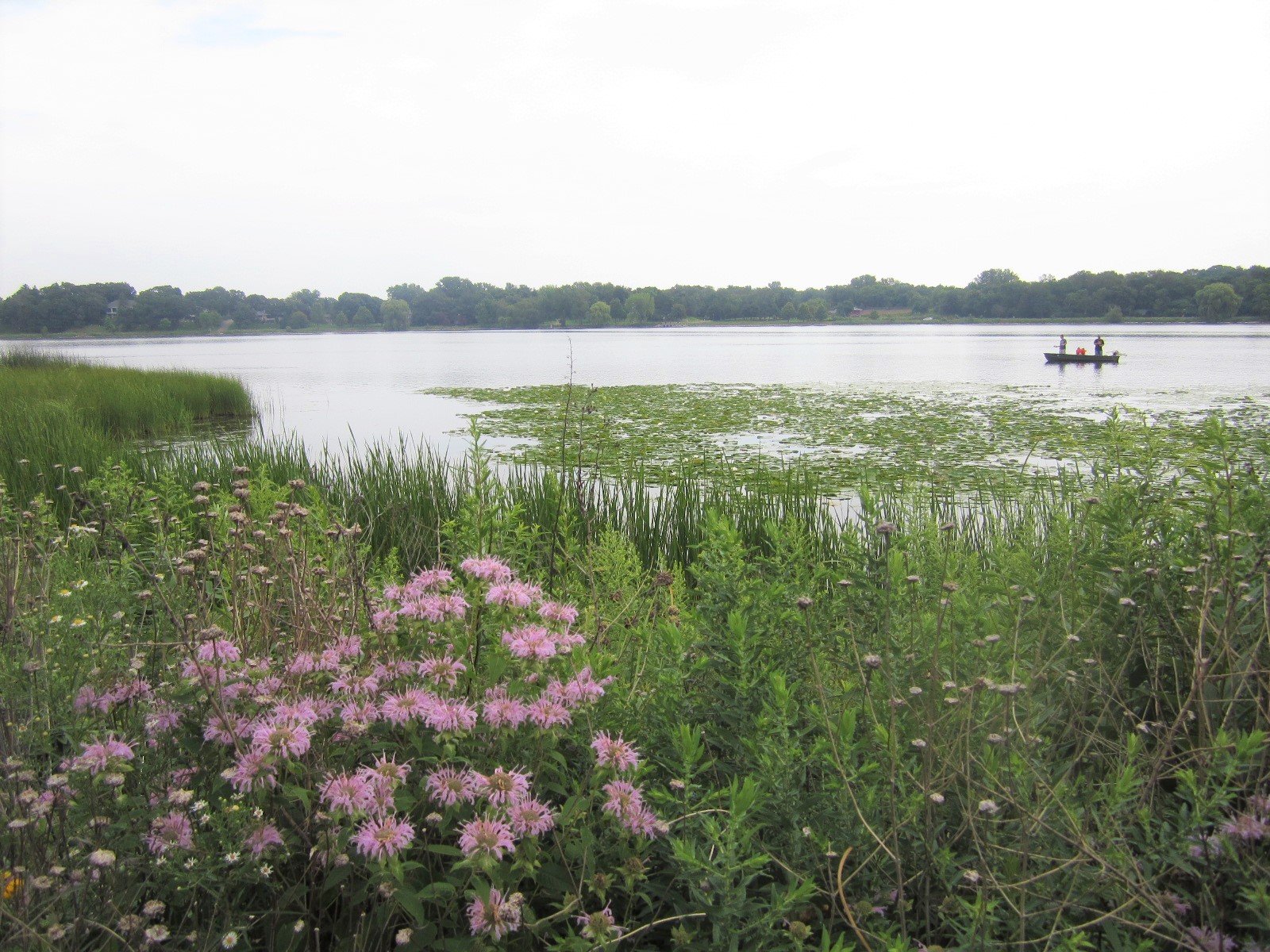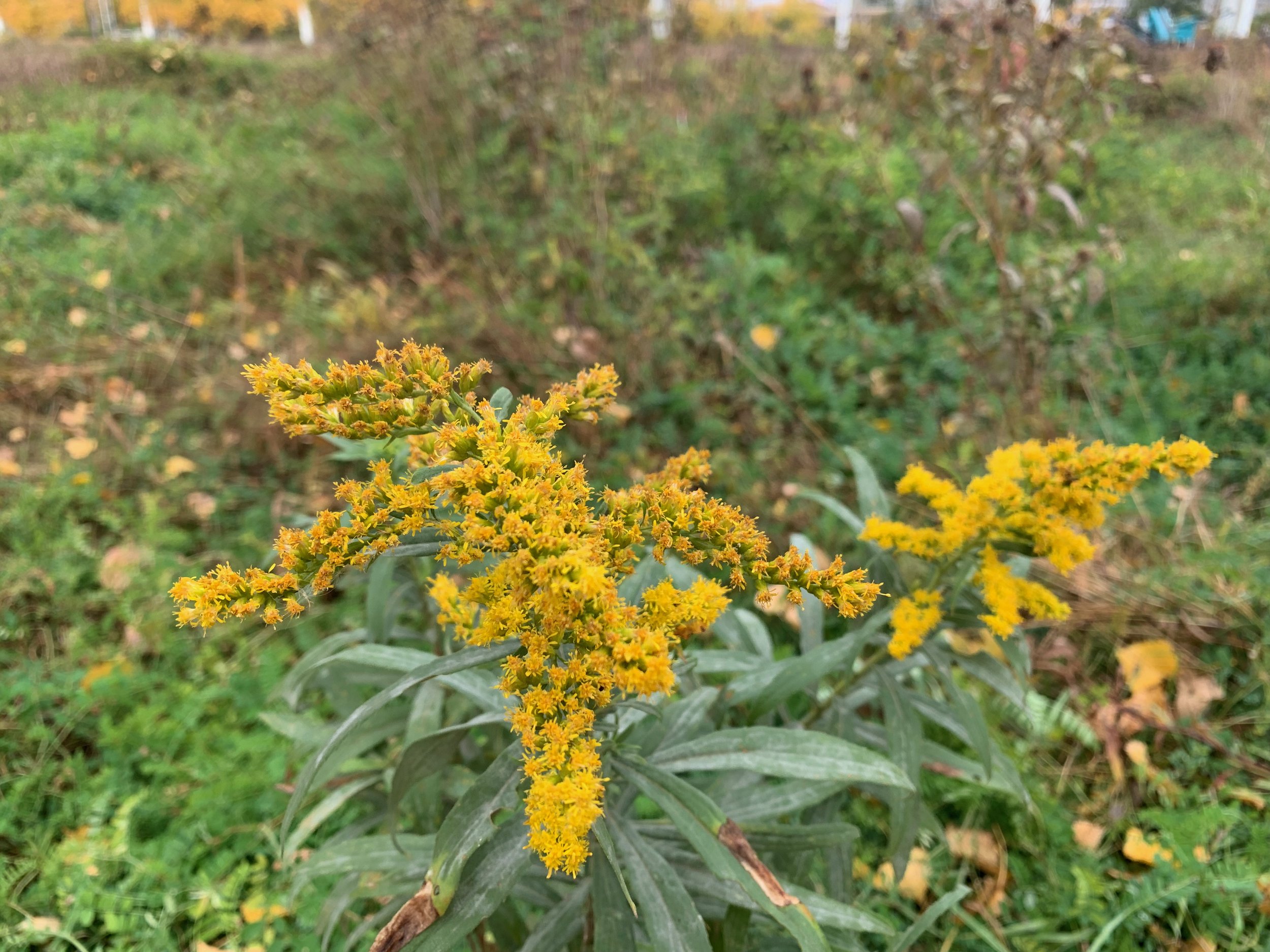Maggie Lorenz - Nature in the Neighborhood
/Maggie Lorenz is the Executive Director of Lower Phalen Creek Project. Photo by Tracy Nordstrom
As a citizen of Mni Sota Makoce / Minnesota, Maggie Lorenz says she “walks in two worlds.”
She is an urban conservationist; a protector of land who is inspired by water. She is of Indigenous (Dakota, Ojibwe) and European (Irish, German) descent. Maggie is a modern woman who laces traditional understanding and customs into daily living in St. Paul. She is a guardian of education and higher learning who learns best, she says, by getting her hands in the dirt.
As Executive Director of Lower Phalen Creek Project (LPCP), Maggie’s hands get plenty dirty planting native grasses and trees, raising money, and modeling environmental and cultural awareness on St. Paul’s East Side. Her organization engages local citizens and resources to re-imagine and activate a greener, healthier urban place. In this moment, Maggie and LPCP are focused on a special project: daylighting Lower Phalen Creek, a storied local waterway that was long ago forced underground.
Paddling in Lower Phalen Creek, circa 1920. Photo: MN Historical Society
The Historical Low Down
Lower Phalen Creek had been a local asset for centuries in what is now St. Paul, both for Indigenous people and early settlers. The creek provided transport, offered a wealth of food, was a source of water (for drinking, for sanitation), and its banks offered a green respite within an increasingly congested city. The asset became a liability, however, as developers sought flat, dry land on which to build. From then on, the flowing creek was engineered away, severing a vital link to Wakpa Tanka / Mississippi River and erasing the community’s connection to water.
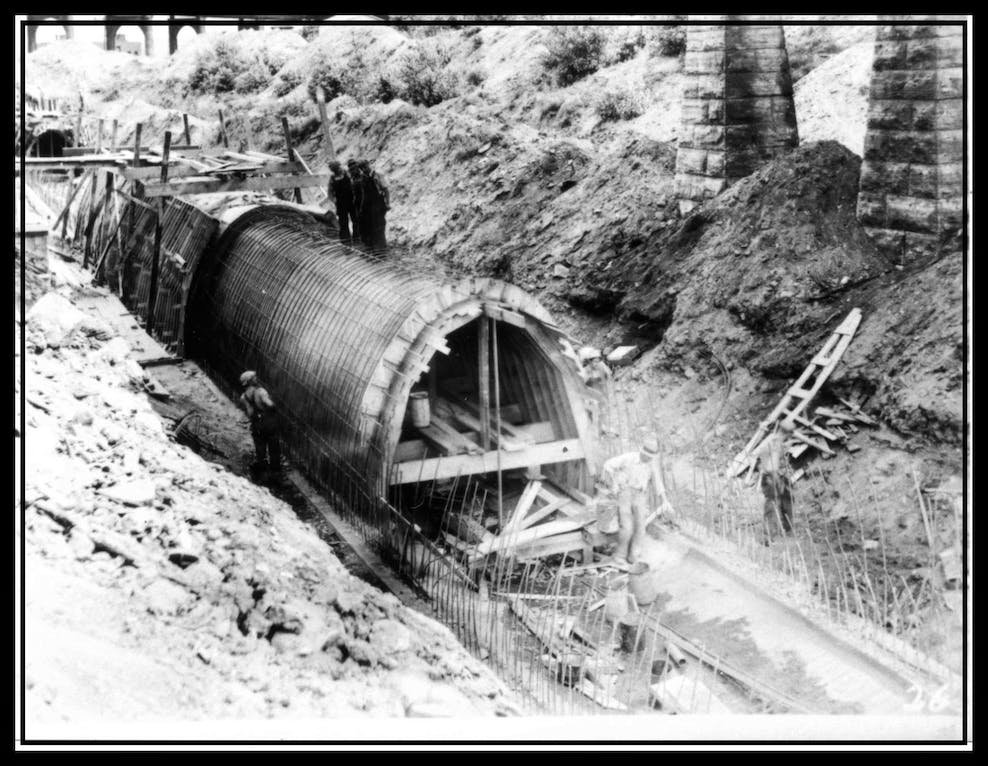
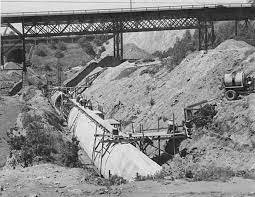
Maggie admits always being fascinated by the natural world and the human connection to it. As a child, Maggie heard about, and was motivated to save, the rainforests and the ocean. “I wanted to help,” she remembers thinking, “but some of these problems were so far away.”
Maggie’s family reinforced how special the natural world was right outside their East Side door: “My mom used to take me to pick wild raspberries along the railroad tracks,” she says. “I remember thinking that really amazing food was just out there; there was such abundance! I remember thinking that our earth is providing this, and how beautiful and amazing that was.”
The same railroad tracks Maggie and her mom walked beside were one reason Lower Phalen Creek disappeared from view almost 100 years ago. Here is how LPCP describes the area’s evolution:
Phalen Creek historically flowed from the south end of Lake Phalen, meandering for about four miles through what is now the East Side of St. Paul, emptying into the Mississippi River near Wakan Tipi cave. This creek served as a corridor for the Dakota people who lived here, traveling from the Wakpa Tanka (Mississippi River) up the chain of lakes by canoe to Bde Mato Ska (White Bear Lake) - one of many areas where they gathered psin (wild rice).
Later, the creek served as the home site of one of Saint Paul’s first European colonists, Edward Phalen, who resided on the banks of the creek in 1838. As one of Saint Paul’s first white settlers, the creek, and eventually the lake from which it came, took on his name. By the 1930’s, the creek was driven entirely underground in a large storm pipe to make way for housing and other development.
On The Way Up
In 1997, Maggie’s East Side neighbors began a campaign to return the creek to the surface. That effort became Lower Phalen Creek Project, a nonprofit focused specifically on the creek’s daylighting, and broadly on local ecological restoration and environmental education. As neighbors and activists, volunteers and resource champions, those ambitious East Siders committed to cleaning up the land, re-creating aquatic and riparian habitat, teaching the benefits of native plants, and inviting broad participation in the restoration efforts. An accessible Phalen Creek, they argued, would offer recreation, better manage stormwater, support wildlife and natural beauty, and connect neighbors once again to the powerful, healing presence of water.
Restored pond with native plantings in Bruce Vento Nature Sanctuary. Photo by Lower Phalen Creek Project
In 2019, Lower Phalen Creek Project hired Maggie (who had been an LPCP volunteer) to lead the organization. Maggie says she had long felt a “heart connection” to the work and describes the organization’s impact as “healing justice for the land, the water, the plants, and for the animals and the winged and finned relatives” of this place. Her connection is historic and personal, at once decidedly Native and uniquely East Side: “These spaces were part of my upbringing,” she says. “I learned stories from my mom and aunties about the sites I work on now.”
Significantly, Maggie’s leadership appointment highlights an institutional shift at Lower Phalen Creek Project toward what Maggie calls a “purposeful, Native-led but not Native-exclusive” approach to environmental justice. Once predominantly white, the organization is now guided by the values of the Dakota people (the original people of this land) and includes cultural activities and ceremony across programming. Maggie says the organization’s staff, board of directors, and many partners - municipal, individual, tribal, foundational, corporate – increasingly reflect the diversity of St. Paul’s East Side. She smiles and her pride shows. Maggie lights up as she describes LPCP’s commitment to including the community’s diverse, present-day perspectives in their work, while honoring and invoking the “deep ecological knowledge Native people have about how to care for their native homelands.”
Some Recent Good News
The Lessard-Sams Outdoor Heritage Council (a grant organization funded through the Minnesota Legislature) has awarded Lower Phalen Creek Project $3.2 million dollars to daylight the first quarter mile of Phalen Creek, a section flowing south out of Lake Phalen. Two-plus decades of organizing and action are finally paying off: work is scheduled to begin in 2024 and the dirt will be flying. “The creek will be back!” Maggie bursts, pumping her fist in elation.
4 miles of Lower Phalen Creek as it flows out of Lake Phalen on its way to Wakpa Tanka/Mississippi River. Notice the residential density of the area, the roads and highways and other human-made barriers between Lake Phalen and the River. Graphic by Inter Fluev and LPCP
Lessons Learned
Imagine a cherished necklace: Lower Phalen Creek is the thread stringing multiple LPCP programming sites together like colorful beads: Wakan Tipi Cave, Indian Mounds Regional Park, Swede Hollow Park, and Bruce Vento Nature Sanctuary among them. The creek connects these sites and, once daylighted, will remind us how people lived, traveled, and cared for each other in this place. People will be able to see the creek, feel it, and be IN it. Maggie says the accessible creek will be a living laboratory where LPCP will offer education and invite disparate groups to volunteer, learn, and play together.
Maggie Lorenz opening site for Wakan Tipi Center at Bruce Vento Nature Sanctuary, August 2022. Photo by Lower Phalen Creek Project
Daylighting Lower Phalen Creek offers a “second chance” for St. Paul’s residents and visitors to connect with nature in the neighborhood once more. The project will continue in phases and rely on ever more partners and creativity to work the living creek back into a developed and diverse urban landscape. Maggie is measured and motivated, enthusiastic and optimistic about the challenges and potential successes ahead. She is acting on her calling: “This is an assignment I have been given,” she says, “and I have to see it through.”
As she draws on history, her family heritage, and the diversity and energy of people on the East Side, Maggie says we should think about daylighting Lower Phalen Creek as a thoroughly modern initiative; Lower Phalen Creek Project is not, she says, “trying to re-create the past” but rather - through education and outreach - emphasizing “what is important in our Dakota culture and bring[ing] it into the future.” She calls herself a “Dakota Futurist” and invites others to join her. “We are trying to teach people to be good stewards of this land we share. After all,” Maggie says with a knowing smile, “these are powerful and spiritual places for all people.”
Resources
Lower Phalen Creek Project: https://www.lowerphalencreek.org/
Lessard-Sams Outdoor Heritage Council: https://www.lsohc.mn.gov/
Pronunciation Guide for Dakota words related to LPCP’s work: https://www.lowerphalencreek.org/resources
Photo Credits
Black and white photos of Phalen Creek engineering: Minnesota Historical Society
Photo of Maggie Lorenz head shot by Tracy Nordstrom
Additional photos by Lower Phalen Creek Project, unless otherwise noted





